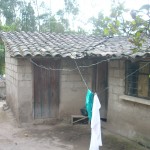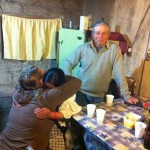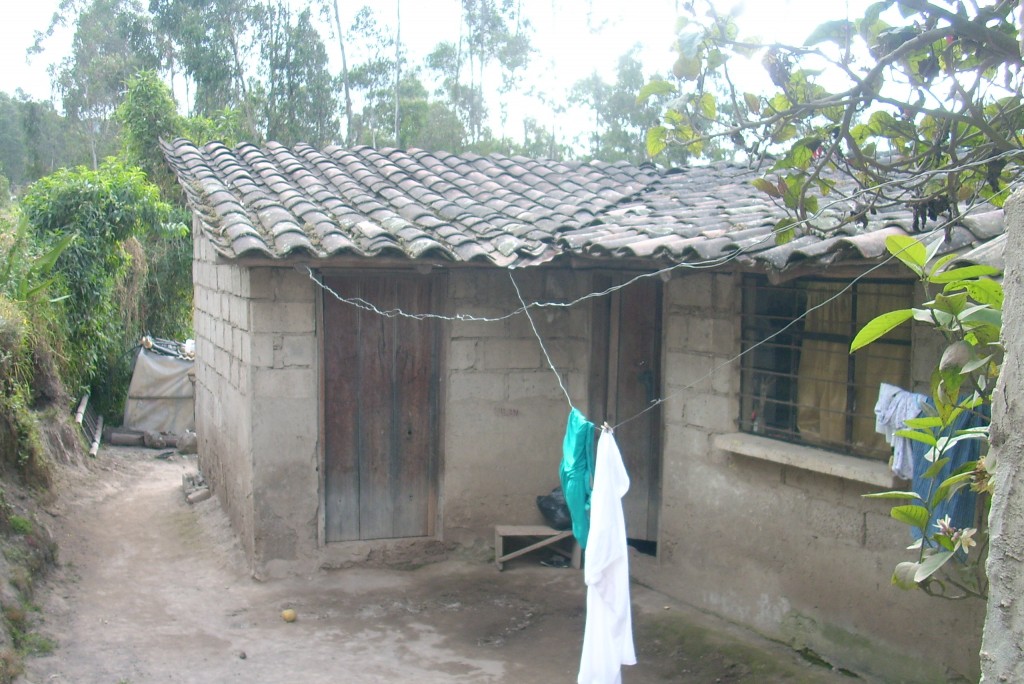 Today’s guest post is by Heidi Bohn, a fellow School for International Training graduate. She and I have a serious interest in reflective re-entry. With so many people returning home after a study abroad or other type of international experience, this piece is particularly timely.
Today’s guest post is by Heidi Bohn, a fellow School for International Training graduate. She and I have a serious interest in reflective re-entry. With so many people returning home after a study abroad or other type of international experience, this piece is particularly timely.
While I’m pretty certain Webster’s Dictionary has a tidy and specific definition of the word “home”, my own travels in the last year have done nothing if make it one of the most complicated terms I know. Home became my belongings in a 15’ x 12’ storage unit. Home became my car. Home became the bed I slept on any given night. Home became a village in rural Ecuador and the cluster of ad hoc edifices my indigenous host family invited me into for nine months. It became their struggles, their languages, their humor, their support, their love; their way of life, for the most part, became mine.
But for any of us who have lived an expatriate life, we know this immersion into another culture does not happen swiftly nor graciously. It is usually a series of stumbles and setbacks, infused with an assortment of frustration, gallons of tears, and endless confusing lessons. To that end, many theorists have attempted to capture the process of culture shock since around the 1950s. Oberg and Gullahorn and Gullahorn laid the foundation visually with their U-curve and W-curve graphs. Their work is now ubiquitous in cross-cultural adjustment and reverse culture shock theory. Such omnipresence has seemingly led to a general and wide understanding about culture shock, and its rather commonplace existence. Rather straightforward, it makes logical sense that living and adjusting to a different culture would prove difficult and cause emotional, physical, mental, and cognitive distress. There is an expectation it will occur.
But what is it about coming home that catches us off guard? Perhaps unless a Third Culture Kid, you have a strong sense of what you call home: your culture and subcultures, your language(s), rituals, routines; an unconscious normalcy in which you pass your days. When abroad, the days can be exhausting trying to learn or perfect the local idiom, attempting to understand the customs, adjusting to the food and climate, or no hot water for bathing. Days are spent exerting ourselves with activities we simply move through effortlessly in our home culture — understanding the bus schedule and customs; not drinking the water from the faucet; how to wash your clothes by hand on a stone sink and a bar of soap; how not to be bitten by mean dogs; expressing yourself fully (or even enough) in another language.
Eventually, however, we learn new vocabulary and local dichos. We know the ins and outs of the bus route and that they collect money after you cross the Panamerican. We are taught how the dogs back off when rocks are thrown, and you find some system of washing laundry (including where the Laundromat in the nearby city is!). Discussions and relationships with your host family become deeper and more intricate. People and places become familiar. Neighbors know you and you know the shortcuts to the next town. Author Craig Storti reminds us that new routines, rituals, and norms develop, replacing those with which you arrived. What once felt foreign is now a kind of home.

This is precisely the crux of reentry and reverser culture shock. As Marion Knell explains in her book Burn Up or Splash Down: Surviving the Culture Shock of Reentry, “The use of the word re-entry makes the assumption that this is a return to something familiar…”. Unlike entering a foreign culture where one has expectations of adjustment challenges, returning home can be deceivingly difficult. Sojourners come home with new perspectives and cultural knowledge informing their understanding of themselves and the world as well as a replaced sense of home.
Some research also suggests that the more one begins to relate to or identify with their place in the family and the community, and culture, the more likely those differences will be visible in contrast upon return to the United States. Knell states that “When it comes to re-entry, we must factor in the culture a person has lived in and the degree to which the person has identified with it.” Forging those deep relationships is rewarding and essential to settling into one’s new world, but to the extent they are rich and integrative there is also a disintegration that occurs upon return.
So, what is it that inspires those of us with a deep sense of wanderlust or even trepidation about leaving our comfort zones to take the leap into the unknown of expatriate life? As Storti reminds us, “reentry…can’t begin to diminish the luster of an expatriate experience. Indeed, it is in some ways precisely because the overseas experience is so rich and stimulating that reentry becomes a problem.” In fact, often grounding the choice to live abroad is growth and the desire to change our way of thinking, being, or understanding the world. It serves us by bridging cultures, challenging assumptions, and affording the sense of truly living. “After all, frustration, loneliness, and unpleasantness are very often the precursors of insight and personal growth.” (Storti)
It is our desire for such powerful experiences “…that ha[ve] the potential to allow for personal growth, to provide mobility for social action and civic engagement, to enhance skills for…professional life, and lastly the ability to further… knowledge about the world and [our] place within it” (SSA, 2008, p. 5). Equally significant as pre-orientation, orientation, programming and processing activities, and other design components, reentry training or resources serves to synthesize and integrate the intercultural experience, expanding one’s life and contributions, and understand the extent of one’s growth from the time abroad.
Upon my own distressful and inspiring travels through reentry and reverse culture shock, I read a lot, established the expectation of reverse culture shock, and prepared as best I could. However, I still left part of me in Ecuador. Not just my home or my family, nor the memories, knowledge, or experiences, but my love for and understanding of them; who I was before them and who I now am afterwards.
I am in two places at all times now. I may be here, but home is where the heart is.
 About the Author: Heidi Bohn holds an M.A. in International Education from SIT Graduate Institute in Vermont. She completed her thesis capstone project on reentry and reverse culture shock, examining relevant theoretical foundations and building a reentry curriculum and tool kit for long-term volunteers with the Tandana Foundation in Ecuador. She currently coordinates the International Education program at SIT Graduate Institute, volunteers doing Spanish translations and various projects for the Tandana Foundation, tending her own blog, and is thrilled to be back playing basketball in her local league. After a career in social work and another in marketing, Heidi has found her home in International Education, a spectacular blend all the fields.
About the Author: Heidi Bohn holds an M.A. in International Education from SIT Graduate Institute in Vermont. She completed her thesis capstone project on reentry and reverse culture shock, examining relevant theoretical foundations and building a reentry curriculum and tool kit for long-term volunteers with the Tandana Foundation in Ecuador. She currently coordinates the International Education program at SIT Graduate Institute, volunteers doing Spanish translations and various projects for the Tandana Foundation, tending her own blog, and is thrilled to be back playing basketball in her local league. After a career in social work and another in marketing, Heidi has found her home in International Education, a spectacular blend all the fields.


Wow. I feel like I shouldn’t have to say this, but I had no idea all this was inside you. Superbly well expressed. Let’s talk, eh? Wow.